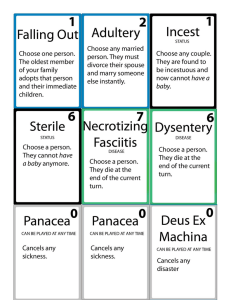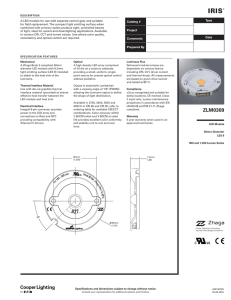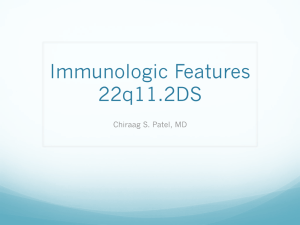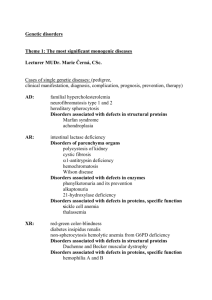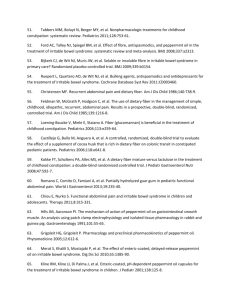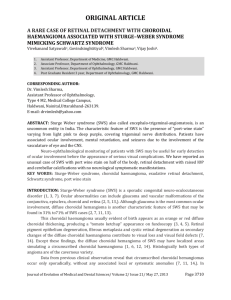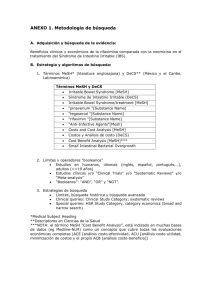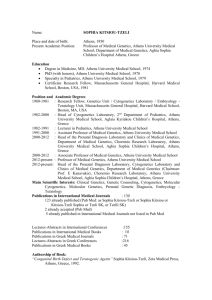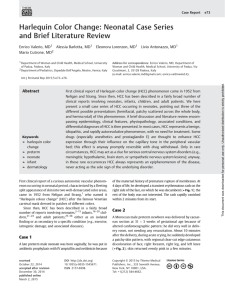Cri du chat Syndrome: recommendations for the care in children and
advertisement
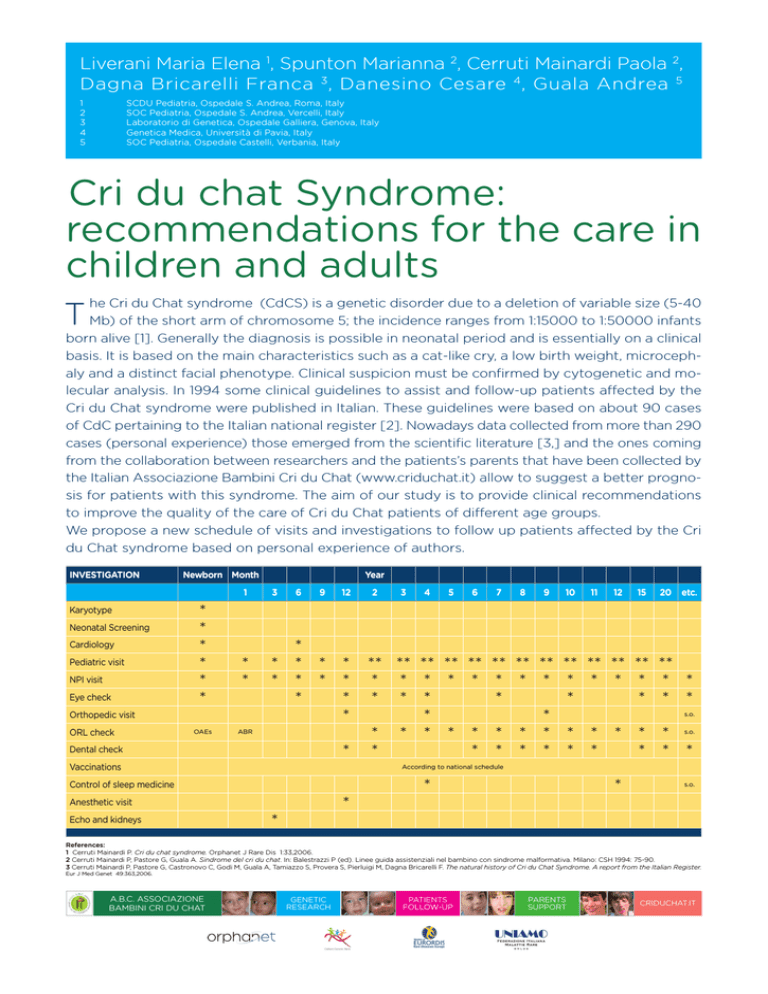
Liverani Maria Elena 1, Spunton Marianna 2, Cerruti Mainardi Paola 2, Dagna Bricarelli Franca 3, Danesino Cesare 4, Guala Andrea 5 1 2 3 4 5 SCDU Pediatria, Ospedale S. Andrea, Roma, Italy SOC Pediatria, Ospedale S. Andrea, Vercelli, Italy Laboratorio di Genetica, Ospedale Galliera, Genova, Italy Genetica Medica, Università di Pavia, Italy SOC Pediatria, Ospedale Castelli, Verbania, Italy Cri du chat Syndrome: recommendations for the care in children and adults T he Cri du Chat syndrome (CdCS) is a genetic disorder due to a deletion of variable size (5-40 Mb) of the short arm of chromosome 5; the incidence ranges from 1:15000 to 1:50000 infants born alive [1]. Generally the diagnosis is possible in neonatal period and is essentially on a clinical basis. It is based on the main characteristics such as a cat-like cry, a low birth weight, microcephaly and a distinct facial phenotype. Clinical suspicion must be confirmed by cytogenetic and molecular analysis. In 1994 some clinical guidelines to assist and follow-up patients affected by the Cri du Chat syndrome were published in Italian. These guidelines were based on about 90 cases of CdC pertaining to the Italian national register [2]. Nowadays data collected from more than 290 cases (personal experience) those emerged from the scientific literature [3,] and the ones coming from the collaboration between researchers and the patients’s parents that have been collected by the Italian Associazione Bambini Cri du Chat (www.criduchat.it) allow to suggest a better prognosis for patients with this syndrome. The aim of our study is to provide clinical recommendations to improve the quality of the care of Cri du Chat patients of different age groups. We propose a new schedule of visits and investigations to follow up patients affected by the Cri du Chat syndrome based on personal experience of authors. INVESTIGATION Newborn Month 1 Karyotype Neonatal Screening Cardiology Pediatric visit NPI visit Eye check * * * * * * * * Orthopedic visit ORL check OAEs Year 3 6 9 12 * * * * * * * * * * * * ABR * Dental check Vaccinations 3 4 5 6 7 8 9 ** ** ** ** ** ** ** ** * * * * * * * * * * * * * * * * * * * * * * * * * * * 10 11 12 15 20 etc. ** ** ** ** ** * * * * * * * * * * s.o. * * * * * * * * * * s.o. According to national schedule Control of sleep medicine * Anesthetic visit Echo and kidneys 2 * * * s.o. References: 1 Cerruti Mainardi P. Cri du chat syndrome. Orphanet J Rare Dis 1:33,2006. 2 Cerruti Mainardi P, Pastore G, Guala A. Sindrome del cri du chat. In: Balestrazzi P (ed). Linee guida assistenziali nel bambino con sindrome malformativa. Milano: CSH 1994: 75-90. 3 Cerruti Mainardi P, Pastore G, Castronovo C, Godi M, Guala A, Tamiazzo S, Provera S, Pierluigi M, Dagna Bricarelli F. The natural history of Cri du Chat Syndrome. A report from the Italian Register. Eur J Med Genet 49:363,2006. A.B.C. ASSOCIAZIONE BAMBINI CRI DU CHAT GENETIC RESEARCH PATIENTS FOLLOW-UP PARENTS SUPPORT CRIDUCHAT.IT
